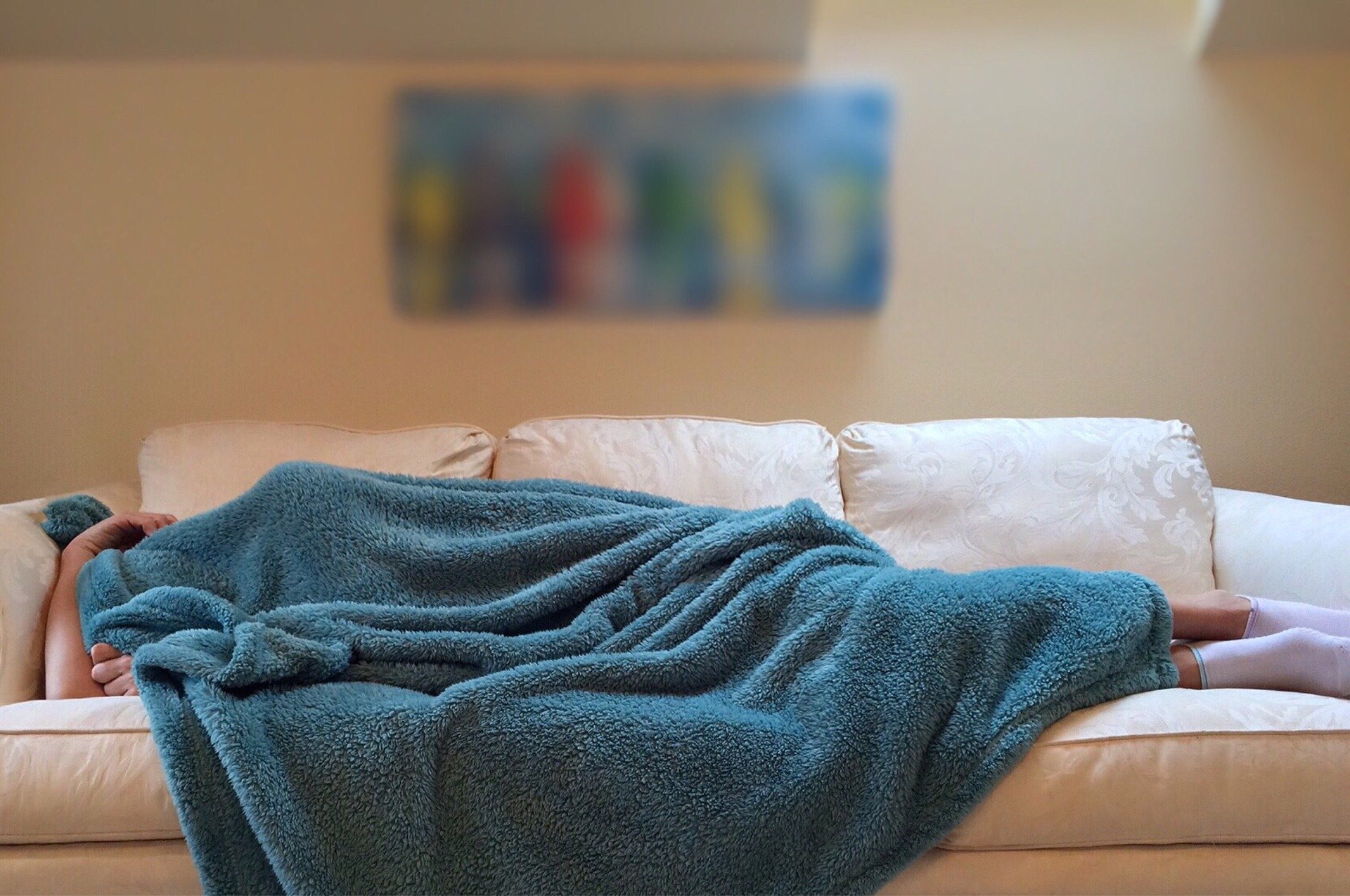Last Updated on June 29, 2022 by Rebecca Huff
How to get a good night's sleep
A good night's sleep simply does wonders for your mood and health! According to the CDC, one in three people fail to achieve a minimum of seven hours of sleep per night. Even though many of us know that we aren't getting enough, we are do little to improve our sleep tally!
Sacrificing sleep is not always about working too much either. Social media and TV time are among the things that we tend to put before getting consistently good sleep.
If you aren't waking up refreshed, here are three things that could be getting in your way!

Drop the temperature during sleep
Sleeping in a room that is too warm means your body will need to work at regulating your body temperature. Scientists have found that our body temp drops before bed, possibly to conserve energy while we are sleeping, although that is just a theory. When your body is working to cool off, it means that you will wake more and sleep lighter.
The solution for a good night's sleep could be to program your home thermostat to drop the temperature (optimal temp is 60-67 degrees) during sleep and then back up right before you normally wake up.
Sleep Positions
Sleep experts suggest sleeping on your back makes it easy for your head, neck, and spine to stay in a neutral position without forcing any extra curves into your back. Also, it may help prevent wrinkles.
If you find it uncomfortable (like I do!) try putting a small pillow underneath your knees to flatten out the lumbar spine. Having your knees in a neutral position this way allows you to take pressure off of your joints causing less back pain.
If you suffer from acid reflux and stomach disorders you might try sleeping on your left side. Chronic snorers can also find relief in this sleep position.
During pregnancy, it is best to sleep on your left side to improve blood flow to the uterus. Sleeping on your side is second to back sleeping because this position can put pressure on your hips and shoulders. If you are a side sleeper, try a thick pillow to reduce neck strain by keeping your head in alignment with your spine. Then use a smaller pillow between your legs to stabilize your hips.
Sleeping on your LEFT side does help your body to remove toxins and waste from your brain more efficiently, according to some ongoing research. (try not to sleep on your right side if possible as it causes your body to have to work harder in many ways.)
Sleeping on the side, back slightly curled with knees bent and arms folded is the position we call “Sleeping Beauty.” I find this position the most comfy! However, the habit of sleeping on my side has given me a vertical wrinkle on my cheek! 🙁
Stomach sleeping is considered the worst position for sleep. Among other reasons, it flattens the curve of the spine leading to back pain.
Sleeping with spouse
More and more couples are opting to sleep in separate bedrooms for one reason or another due to multiple reasons:
Sleep habits – Night owls and early birds have a hard time finding a bedtime routine that works for both. Those who prefer not to watch TV late into the evening may be disturbed by their late night watching partner.
Sleep Disruptions – When your bed-mate snores, tosses, turns, pulls the covers and gets up to use the bathroom it can be difficult to sleep! (memory foam mattresses can lessen the disruption of movement)
Sleep Environment – One person likes it hot; one person prefers An Arctic breeze! Lighting preferences, number of blankets,
Sleep Equipment – One partner likes a soft mattress, the other a firm.
Sleep Schedule conflicts – When one person works a different shift.
Co-sleeping – Parent's are not always in agreement when it comes to sharing the bed with a toddler or two! One parent may feel that cosleeping prevents a good night's sleep.
There's nothing wrong with keeping separate bedrooms in search of a good night's sleep. Just make sure to find other ways to maintain closeness and intimacy. Some people choose disrupted sleep over sacrificing the intimacy and feeling of safety that comes with sleeping with their partner. If both sleepers are suffering, though, you might consider sleeping in separate beds … or download this Good Hygiene Sleep PDF and work on improving your sleep!

Sleeping with Pets
Sleeping with pets can be a great way to get in your snuggle-time, but if it is keeping you from sleeping your best bet is to banish the pets!
Sleeping with Children
Not as easy to banish the kiddos from the bed! If you are waking up with a foot in your face night after night, you might consider moving a small bed into your room for your child to transition to. Eventually, children will stop wanting to co-sleep! Until that time comes, enjoy it if you can! If you find yourself frequently missing out on sleep, though, it might be time to reconsider the co-sleeping arrangement.
What are your thoughts?
By the way, it's the Monday after “Spring Forward” so here's how to cope with Daylight Savings Time and get a good night's sleep!
- Get as much light as possible during the day.
- Avoid light at night (don't turn on lights if you get up to visit the bathroom) and sleep in total darkness.
- Don't nap!
- Avoid caffeine in the afternoon.
- Get extra sleep Sunday night!
- Go to bed and get up at your usual time
- Eat a breakfast on Monday morning with energy foods such as strawberries, spinach, yogurt, bananas, kale, or oatmeal!


 How anger can destroy your attempts to be healthy
How anger can destroy your attempts to be healthy
These are great tips! I am loving all this info. Have you ever heard of the 4-7-8 method? We use it in my house and it really works! Count to 4 as you inhale, hold your breath as you count to 7, exhale slowly as you count to 8. It slows the heart rate and phts me to sleep within minutes. It is great to help kiddos get back to sleep when they wake with a bad dream too.
Yes! But, on the advice of a child psychologist we actually simplified it to the 5-5-5 method… it works for kids when they are upset, nervous, or anxious, using this breathing technique can trigger their (our) parasympathetic nervous system to calm down! Works for anxiety attacks too! Great tip Stacey!